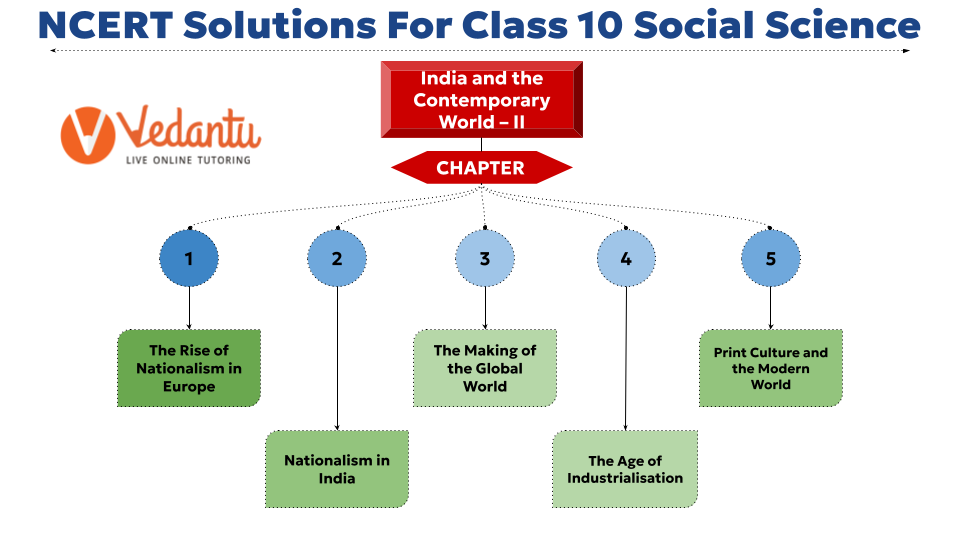Chapter-wise Class 10 Social Science India And The Contemporary World Questions and Answers Free PDF Download
FAQs on NCERT Solutions For Class 10 Social Science India And The Contemporary World All Chapters - 2025-26
1. Where can I find reliable NCERT Solutions for Class 10 Social Science History for the 2025-26 session?
You can find expert-verified NCERT Solutions for all chapters of the Class 10 History textbook, 'India and the Contemporary World - II', prepared according to the latest CBSE 2025-26 guidelines. These solutions cover every question from the textbook exercises.
2. How do these NCERT Solutions help in scoring good marks in the board exams?
These solutions are designed to help you write answers exactly as per the CBSE pattern. They provide step-by-step explanations that clarify how to structure your answers, include important keywords, and cover all key points required to score full marks in the Class 10 Social Science exam.
3. Are the solutions for all chapters of 'India and the Contemporary World - II' available?
Yes, the NCERT Solutions cover all chapters prescribed in the CBSE syllabus for Class 10 History. The chapters included are:
- The Rise of Nationalism in Europe
- Nationalism in India
- The Making of a Global World
- The Age of Industrialisation
- Print Culture and the Modern World
4. Why is it important to follow the structured answers in NCERT Solutions instead of just memorising facts?
History answers require more than just facts; they need a proper argument. Following a structured solution helps you understand how to build a logical sequence, connect causes with effects, and present your points clearly. This method is crucial for long-answer questions and helps the examiner see that you have understood the topic deeply.
5. How do the solutions explain source-based or picture-based questions from the History textbook?
The solutions provide detailed interpretations for source and picture-based questions. They guide you on how to analyse the visual or text, identify the historical context, and formulate an answer that directly addresses the question asked, which is a key skill for the Social Science paper.
6. What is the correct way to use these NCERT solutions for exam preparation?
The best way to use these solutions is to first try solving the textbook questions yourself. Afterwards, compare your answer with the provided solution. This helps you identify your mistakes, understand the correct answer-writing format, and learn how to include important dates and events effectively.
7. Can these solutions help with difficult chapters like 'The Making of a Global World'?
Absolutely. For complex chapters, the solutions break down intricate concepts into simpler, easy-to-understand points. They clarify connections between global events and their impact, making it easier to grasp the chapter's core themes and prepare for any question that might be asked from it.
8. How do the provided solutions ensure they are accurate and align with the CBSE curriculum?
All solutions are created by subject matter experts who thoroughly follow the latest NCERT textbook and CBSE guidelines for the 2025-26 academic year. Each answer is verified for historical accuracy and adherence to the marking scheme, ensuring you learn the correct information.









































